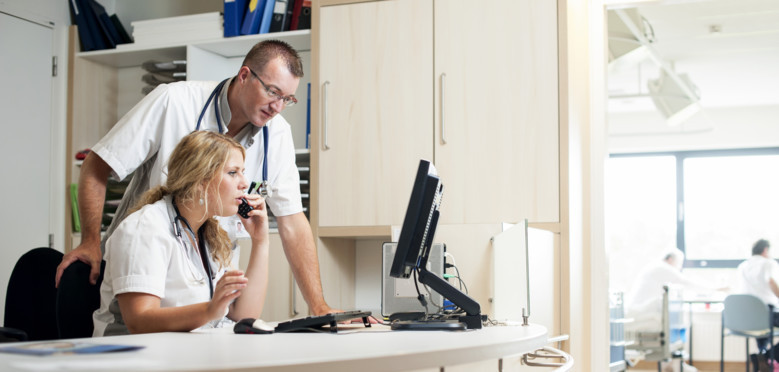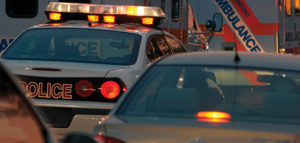Add new dimensions to patient care with video surveillance
Ensuring a smarter, safer environment is a priority for every hospital, no matter the size or location. However, this can be difficult due, in part, to the amount of activities happening all at once between patients, staff or visitors. Leveraging new technology for patient monitoring can improve patient care and safety, while utilizing fewer resources and allowing staff to be more efficient with their job and time.
Safe hospitals are smart hospitals
While hospitals and health systems are expanding their use of video surveillance, not all may necessarily be using its capabilities to its fullest potential. Video can be utilized as more than a security and surveillance tool. It can be used to monitor patients that are flight and fall risks or need 24/7 observation. After all, it isn’t feasible to have a nurse by every bedside in a hospital, but remote patient monitoring can help keep patients safer than before.
Of course, new technology that healthcare providers add to their practice needs to adhere to strict policies, since privacy is always a concern in a healthcare setting where a certain level of respect and privacy are needed to create a safe, healing environment.
Take, for example, Nemours Children’s Hospital in Orlando, Florida. Nemours installed clinical cameras to remotely monitor patients from a Tactical Logistics Center (TLC), reducing alarm response time from minutes to seconds. The high-resolution video improved patient care and patient safety by adding a third level of observation to all hospital beds with only one centralized logistics center for the whole enterprise.
I had the opportunity to ask Joe Summanen, Technical Architect at Nemours Children’s Hospital, a few questions about how the use of network cameras improved his hospital’s operations and patient safety.
A Q&A with Nemours Children’s Hospital
Joe, can you tell me a little about Nemours Children’s Hospital and its goals?
Nemours is a provider led, nonprofit pediatric health system that is dedicated to providing life-changing medical care and research to all children, as well as equally helping those children grow up and live healthier lives. It’s truly inspiring to see so many individuals committed to coming together to provide the best possible care for all the children we see.
What is the Tactical Logistics Center (TLC)?
The TLC is a centralized patient monitoring center that provides real time 3rd level monitoring of every child in every bed. The TLC is based in Orlando, FL but also monitors patients in our sister hospital located in Wilmington, DE. Within the TLC, the clinical staff has the ability to monitor all physiological monitors, but they also have the capability to audio and video into every patient room in case of a medical emergency.
Can you elaborate more on the three levels of patient monitoring?
Sure. The first level of monitoring is in the patient room, the second would be the care team located on the floor and at the nursing stations within the unit, and lastly the TLC, which would be that third set of eyes actively monitoring the health of every child in every bed. Again, staff are able to provide clinical support, initiate codes or calls to rapid response teams via triggers or trends they are seeing.
How did your team come up with the idea for the TLC?
It was our Chief Clinical Officer, Dr. Stephen Lawless, who came up with the idea to have a clinical command center or mission control. Imagine a large room with a wall of monitors, but instead of monitoring astronauts we’re monitoring patients. The TLC works closely with our Security Command Center to help communicate alerts or codes. The idea is that we wanted to be able to provide a third level of monitoring for our patients and a safer, more responsive environment for them, their families, and our associates.
What was the initial challenge you faced when implementing this remote patient monitoring system? How did you overcome it?
When we were initially discussing putting an observation camera into each patient room, there were some concerns and feedback from our family advisor board. What it really boils down to is education and communication. Letting the families know the cameras are there to help in an emergency and that we’re not observing without announcing ourselves first and letting everyone in the room know they are about to connect via video. We’re never recording the patient room footage, and we have a privacy LED on the camera to alert anyone in the room that someone from the TLC has connected to the camera and is streaming video. We go through these details with each family if they have a child that is admitted. Not only are we giving them an opportunity to ask questions, but we also provide them with a pamphlet to take with them and review at a later time if they wish.
Can you share any positive trends that you’ve seen now that this system is in place?
One particular comment from one of our providers that really hit home with me was the fact that being able to use audio and video to assist at any time has significantly changed the healthcare model here at Nemours. Even just after the first month of going live, the benefits and improved patient safety were immediate. My thought has always been, it’s all about the triggers, notifications, and trends. Not just thinking about how can we provide better care to our patients, but how do we provide better care more quickly and efficiently.
Have you utilized network cameras in other aspects, aside from the TLC?
One of the great implementations that I think about when leveraging network video technology in the clinical space was with our behavioral health and autism clinic. At a high level, we were able to setup multiple consultation rooms to monitor and record care team-child and parent-child working sessions, and then work with parents and families to go over those different tasks. The care team and parents are able to review those sessions together, and then identify and discuss ways to improve. The clinical team truly uses it every day to help kids and their parents have a better life and be able to thrive.
Utilizing the right technology for patient monitoring
When researching how to utilize technology to improve patient safety and care, network video surveillance may not have been at the top of your mind. But I believe it should be (and hopefully is) now. Today’s hospitals are advancing and ever-changing. With network technology, they now have the ability to monitor patient vitals, detect small changes in health and accelerate emergency response with remote patient monitoring. This gives health care providers the ability to provide smarter, safer around-the-clock patient care. And, as we’ve discussed in this blog post, Nemours is the perfect example of a provider that is utilizing the latest network technology to help patients.
Being able to remotely monitor inpatients 24/7, evaluating vital signs, patient history, clinical reports and lab work, has given Nemours the chance to provide that extra level of care their patients truly need. With network solutions, Nemours (and hospitals everywhere) can add the extra eyes and ears nurses, doctors and parents must have to enhance patient care and accelerate emergency response times.
To learn more about how video is improving patient care at Nemours Children’s Hospital:





Share your view
You must be logged in to post a comment.